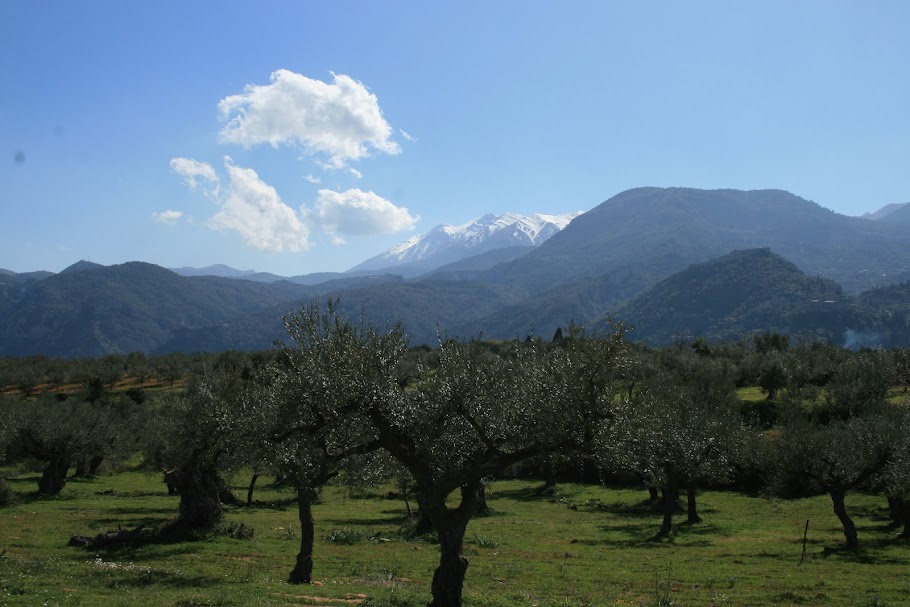The Messenian War(s) forced Sparta to adopt a new, radical constitution that was quite unlike any in the contemporary world. That new constitution included elements like an Assembly of citizens that would soon be imitated elsewhere, but one feature never found imitators -- until more than a millennia later -- land reform.
Today I look more closely at this radical feature of the Spartan Constitution.
Although this event is lost in the mists of undated ancient history, all ancient historians agree that at some time (probably in the late 8th or early 7th century BC, by our reckoning) Spartan society underwent a severe crisis. A rebellion or civil war so threatened the continued existence of the city-state that the citizens were prepared to accept radical new laws reputedly developed by Lycurgus. These laws included a redistribution of the land. The land was divided into equal plots of sufficient size to support a man and his family, and each citizen was given a plot, or estate – a kleros. Henceforth the Spartans called themselves equals, or Peers – because they were equal not only in rights but also in wealth.
We do not know the exact size of these "kleros," but they were designed to ensure each citizen could produce enough food to contribute to his syssitia and also pay the agoge fees for his sons. We also know that from the inception of the reforms, Spartan citizens were not expected to till this land themselves. On the contrary, they had helots, agricultural workers of non-Doric descent, who tilled the land for them. Presumably, at the time of Lycurgus’ Great Reforms, there was one adult male helot on each kleros, who tilled the land for the benefit of himself and the Spartiate “master.” According to the law each party, the Spartiate master and the helot, received 50% of the harvest. Officially, neither the Spartiate nor the helot actually owned the land, which belonged to the state. Both were hereditary “tenants.”
It is also probable that not all land in Lacedaemon was divided up. The kings almost certainly retained large estates that were not carved up during the reforms. Furthermore, Because citizens needed to be within walking or riding distance of their syssitia's and barracks, the immediate vicinity of Sparta (that is, in the Eurotas valley) was most likely the land divided into equal portions, More distant parts of Lacedaemon (such as Kythera or on the coast of Laconia) probably remained in the hands of their former owners, while land conquered later, notably in Messenia, may have been divided on a basis other than strict equality.
Another factor influencing the distribution of land over time would have been inheritance laws, particularly the right of women to inherit. Furthermore, it is only possible to sustain equal distribution of a fixed amount of land if there is only one male heir to each plot of land. Human demographics do not, however, produce perfect replacement. Even in countries with primogeniture (such as medieval England), families die out in the male line on average every three generations. Without primogeniture, however, an excess of heirs rapidly reduces a family to penury. To avoid these consequences, societies evolve inheritance and marriage laws to regulate the distribution of wealth over generations. An excellent short discussion of Sparta's land reform is provided in Paul Cartledge's Sparta and Laconia: A Regional History 1300 to 362 BC (Routledge, London, 1979), and a more comprehensive treatment of the subject can be found in Stephen Hodkinson, Property and Wealth in Classical Sparta (Duckworth, London, 2000).
Thus, inevitably, with time the equality of wealth created during the Lycurgan reforms was eroded. By the second half of the 5th century BC, wealth had become concentrated in the hands of fewer and fewer families. Spartan citizens were no longer equally wealthy.
Yet even if Spartans were not in fact equally wealthy, the myth of equality remained powerful, and laws prohibited the hoarding of wealth, particularly the ownership of gold and silver coins (possibly all gold and silver). The ostentatious display of wealth was frowned upon socially. This set Sparta apart from the other Greek city-states, where the landed aristocracy, wealthy merchants, and manufacturers engaged in extravagant displays of wealth and competed for the honor of donating the most generous gifts to their respective cities. In short, Spartan dress, taste, and style were shaped by the ethos of equality, by the very definition of Spartan citizens as "equals" -- Peers.
Most important, while some Spartan citizens accumulated wealth and became richer than their fellows, and while the citizens of other cities could be reduced to beggary, all Spartans were guaranteed a minimum standard of living – something most modern observers would applaud rather than condemn.
The need and impact of the land reform is a major theme in Are They Singing in Sparta? (ebook: A Song for Sparta) a novel set during the Messenian War:



Once again, Sparta, not Athens, proves to be the origin of the concept itself.
ReplyDeleteMakes one wonder: Just what in the hell did Athens give us?
Long Live Sparta!